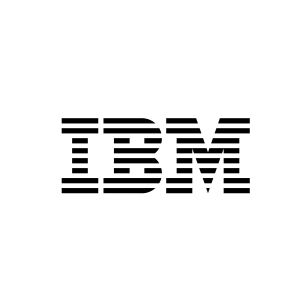Description
Course Content
- Module 1: Best Practices for Application Development
- Module 2: Google Cloud Client Libraries, Google Cloud SDK, and Google Firebase SDK
- Module 3: Overview of Data Storage Options
- Module 4: Best Practices for Using Google Cloud Datastore
- Module 5: Performing Operations on Buckets and Objects
- Module 6: Best Practices for Using Google Cloud Storage
- Module 7: Handling Authentication and Authorization
- Module 8: Using Google Cloud Pub/Sub to Integrate Components of Your Application
- Module 9: Adding Intelligence to Your Application
- Module 10: Using Google Cloud Functions for Event-Driven Processing
- Module 11: Managing APIs with Google Cloud Endpoints
- Module 12: Deploying an Application by Using Google Cloud Cloud Build, Google Cloud Container Registry, and Google Cloud Deployment Manager
- Module 13: Execution Environments for Your Application
- Module 14: Debugging, Monitoring, and Tuning Performance by Using Google Stackdriver
Who should attend
Application developers who want to build cloud-native applications or redesign existing applications that will run on Google Cloud Platform
Certifications
This course is part of the following Certifications:
Google Cloud Certified Professional Cloud Developer
Prerequisites
To get the most benefit from this course, participants should have the following prerequisites:
Completed Google Cloud Platform Fundamentals or have equivalent experience
Working knowledge of Node.js
Basic proficiency with command-line tools and Linux operating system environments
Course Objectives
This course teaches participants the following skills:
Use best practices for application development.
Choose the appropriate data storage option for application data.
Implement federated identity management.
Develop loosely coupled application components or microservices.
Integrate application components and data sources.
Debug, trace, and monitor applications.
Perform repeatable deployments with containers and deployment services.
Choose the appropriate application runtime environment; use Google Kubernetes Engine as a runtime environment and later switch to a no-ops solution with Google App Engine Flex.
Outline: Developing Applications with Google Cloud Platform (DAGCP)
Module 1: Best Practices for Application Development
Code and environment management
Design and development of secure, scalable, reliable, loosely coupled application components and microservices
Continuous integration and delivery
Re-architecting applications for the cloud
Module 2: Google Cloud Client Libraries, Google Cloud SDK, and Google Firebase SDK
How to set up and use Google Cloud Client Libraries, Google Cloud SDK, and Google Firebase SDK
Lab: Set up Google Client Libraries, Google Cloud SDK, and Firebase SDK on a Linux instance and set up application credentials
Module 3: Overview of Data Storage Options
Overview of options to store application data
Use cases for Google Cloud Storage, Google Cloud Datastore, Cloud Bigtable, Google Cloud SQL, and Cloud Spanner
Module 4: Best Practices for Using Google Cloud Datastore
Best practices related to the following:
Queries
Built-in and composite indexes
Inserting and deleting data (batch operations)
Transactions
Error handling
Bulk-loading data into Cloud Datastore by using Google Cloud Dataflow
Lab: Store application data in Cloud Datastore
Module 5: Performing Operations on Buckets and Objects
Operations that can be performed on buckets and objects
Consistency model
Error handling
Module 6: Best Practices for Using Google Cloud Storage
Naming buckets for static websites and other uses
Naming objects (from an access distribution perspective)
Performance considerations
Setting up and debugging a CORS configuration on a bucket
Lab: Store files in Cloud Storage
Module 7: Handling Authentication and Authorization
Cloud Identity and Access Management (IAM) roles and service accounts
User authentication by using Firebase Authentication
User authentication and authorization by using Cloud Identity-Aware Proxy
Lab: Authenticate users by using Firebase Authentication
Module 8: Using Google Cloud Pub/Sub to Integrate Components of Your Application
Topics, publishers, and subscribers
Pull and push subscriptions
Use cases for Cloud Pub/Sub
Lab: Develop a backend service to process messages in a message queue
Module 9: Adding Intelligence to Your Application
Overview of pre-trained machine learning APIs such as Cloud Vision API and Cloud Natural Language Processing API
Module 10: Using Google Cloud Functions for Event-Driven Processing
Key concepts such as triggers, background functions, HTTP functions
Use cases
Developing and deploying functions
Logging, error reporting, and monitoring
Module 11: Managing APIs with Google Cloud Endpoints
Open API deployment configuration
Lab: Deploy an API for your application
Module 12: Deploying an Application by Using Google Cloud Cloud Build, Google Cloud Container Registry, and Google Cloud Deployment Manager
Creating and storing container images
Repeatable deployments with deployment configuration and templates
Lab: Use Deployment Manager to deploy a web application into Google App Engine flexible environment test and production environments
Module 13: Execution Environments for Your Application
Considerations for choosing an execution environment for your application or service:
Google Compute Engine
Kubernetes Engine
App Engine flexible environment
Cloud Functions
Cloud Dataflow
Lab: Deploying your application on App Engine flexible environment
Module 14: Debugging, Monitoring, and Tuning Performance by Using Google Stackdriver
Stackdriver Debugger
Stackdriver Error Reporting
Lab: Debugging an application error by using Stackdriver Debugger and Error Reporting
Stackdriver Logging
Key concepts related to Stackdriver Trace and Stackdriver Monitoring. Lab: Use Stackdriver Monitoring and Stackdriver Trace to trace a request across services, observe, and optimize performance




